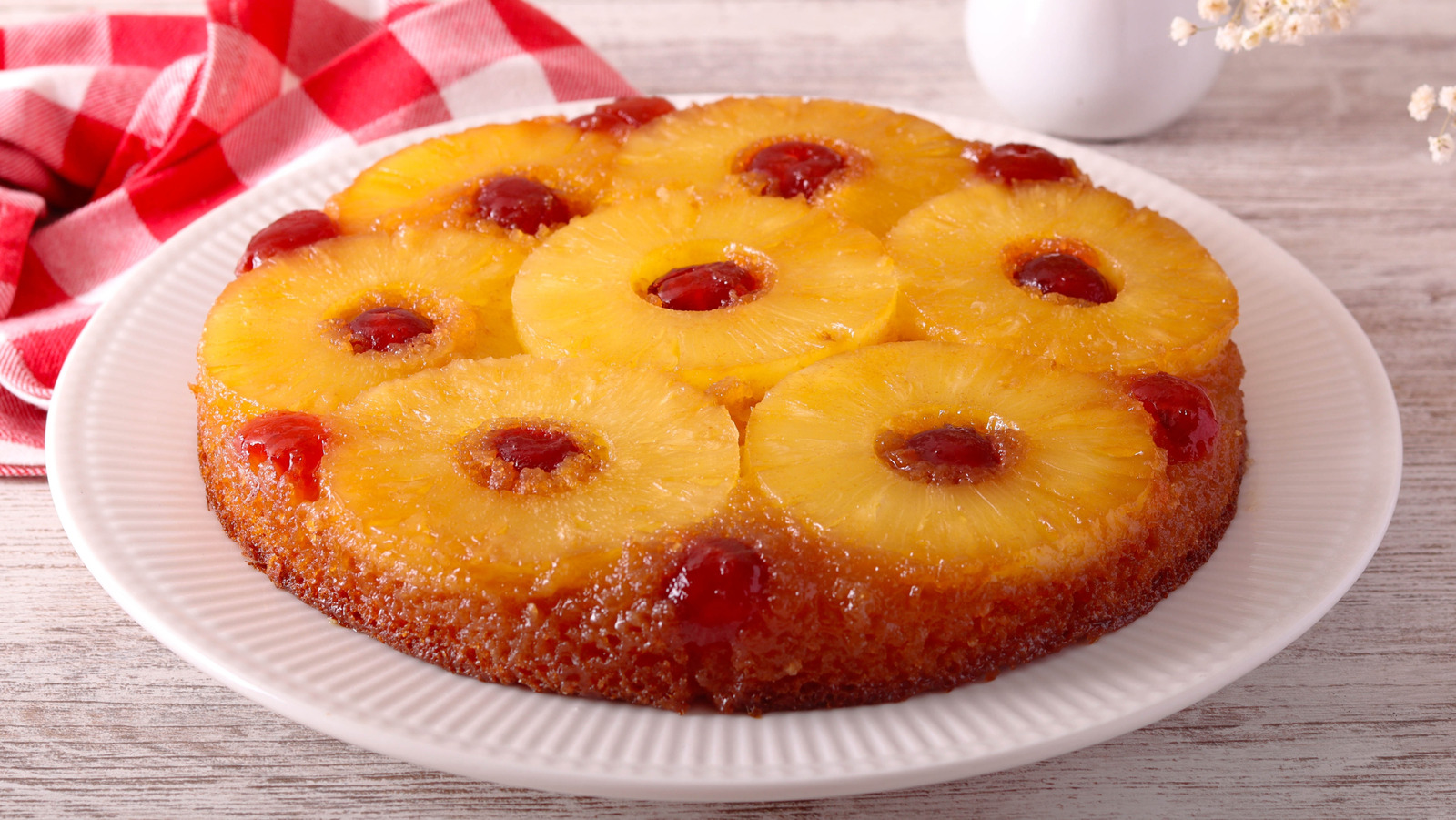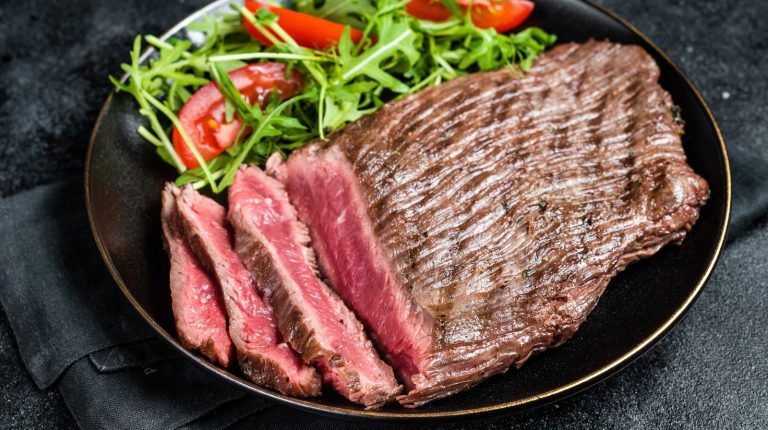Whenever you hear “upside-down cake,” your thoughts likely immediately turn to pineapple. The pineapple upside-down cake has been around for nearly a century and has reached iconic status, but it wasn’t the original iteration of a flipped fruit cake. That distinction belongs to dried plums, which we know from recipes appearing in newspapers as early as 1923. The Pittsburgh Press (via Newspapers.com) ran a recipe boasting, “A coffee cake made in a frying pan — a coffee cake where the top becomes the bottom and the bottom becomes the top!” That idea wasn’t brand new. Cakes with fruit had been made that way in Europe since the Middle Ages. Americans coined them “skillet cakes,” while the “upside-down” term came into play with those 1920s recipes.
Pineapples wouldn’t have been available to Europeans and Americans in those early upside-down cake days. They’re native to South America and spread to the Caribbean islands; Europeans learned about them through explorers like Christopher Columbus and began growing their own, but the supply remained so limited that pineapples were outrageously expensive. Plums, meanwhile, grew in Europe, as did apples, pears, peaches, and figs — that’s why a plum upside-down cake would have been more common, as would any cake with dried fruits because that allowed the fruits to be preserved for longer periods of time without refrigeration. In America, many of the same fruits were being cultivated in the 18th and 19th centuries, and apple skillet cakes would have been a common choice.
Why pineapple became the most popular pick of the other upside-down cake fruits
Pineapples became widely available in America in the 20th century thanks to James Dole. The Dole Food Company began canning the fruit, too, and to boost sales, it held a competition in 1925 for the best dish using pineapple. The winner was pineapple upside-down cake. The new access to pineapples in the 1900s had made people excited to use this novel tropical fruit and enjoy its sweet, tangy flavor. When it started to be canned, it became an especially convenient ingredient to use for baking compared to fresh fruits, and pineapple upside-down cake became one of the most popular desserts by the 1930s. The fruit even had its own look, which was part of the appeal, since canned pineapple often comes in ringed slices.
Pineapples caramelize well and bring bright flavors to the cake’s richness, so it’s no wonder they’ve remained a classic choice for these recipes. You can continue to enjoy and perfect your own, but you can also explore the other flavors that varying fruits have brought to this baked good over the years, like that dried plum cake from 1923. Or try a different, sweeter tropical profile with banana upside-down cake. Pay homage to earlier American iterations with an updated twist by making a salted caramel apple upside-down cake, or nod to long-ago European traditions with a fig upside-down cake and bay leaf caramel.





